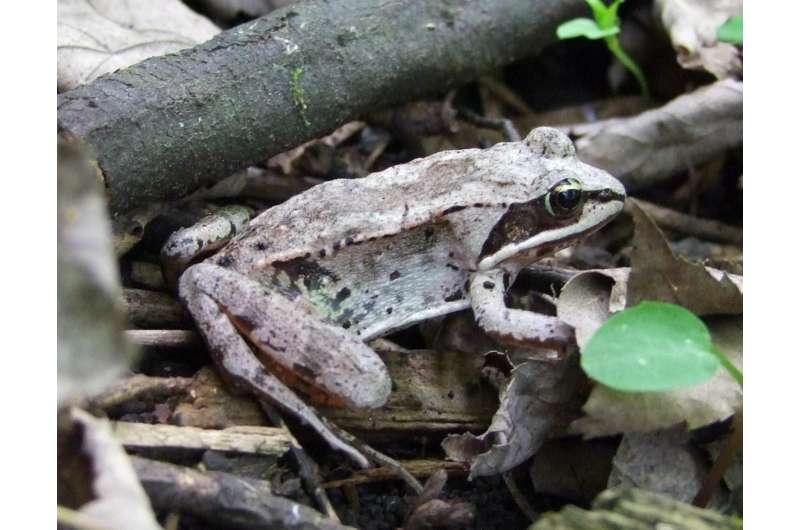September 28, 2016 report
Humans found to be playing a role in spread of ranavirus

(Phys.org)—A team of researchers with the Zoological Society of London, Queen Mary University of London, University College London and Herpetofauna Consultants International and assisted by citizen scientists involved with the Frog Mortality Project, has found evidence that suggests human activities may be playing a role in the spread of ranavirus, which attacks and kills reptiles, amphibians and fish. In their paper published in Proceedings of the Royal Society B, the team describes the means by which data was collected, what it showed and outlines ways for people to help prevent the spread of the disease.
Scientists around the world have become concerned about dropping amphibian population numbers due to ranavirus, which attacks skin or organs. It is considered highly infectious—an outbreak can kill all of the frogs in a single pond, for example. Huge numbers of creatures are dying and there's a possibility of the virus mutating and spreading to other wildlife, or even humans. It is believed the virus typically moves from pond to pond or to streams when infected individuals move themselves between locations carrying the virus with them.
In this new effort, the researchers sought to learn more about the history of the spread of the virus in the U.K. To that end, they compiled frog population data obtained by both citizen scientists and professionals in the field and downloaded nucleotide sequences from the NCBI nucleotide database.They discovered that the virus appeared to have been introduced from the Americas and that it had been introduced into the U.K. on at least two separate occasions. They also found that it spread more rapidly in urban areas, particularly in wealthy neighborhoods. The researchers suggest this is likely due to people in those areas transporting frogs, fish and other animals between garden ponds or between pet stores and garden ponds.
To slow the spread of viral infections, the researchers suggest that homeowners stop transporting frogs or fish between garden ponds and only buy stock from reputable dealers. They also note that their study has also showcased the value of long-term citizen science projects.
More information: Stephen J. Price et al. Reconstructing the emergence of a lethal infectious disease of wildlife supports a key role for spread through translocations by humans, Proceedings of the Royal Society B: Biological Sciences (2016). DOI: 10.1098/rspb.2016.0952
Abstract
There have been few reconstructions of wildlife disease emergences, despite their extensive impact on biodiversity and human health. This is in large part attributable to the lack of structured and robust spatio-temporal datasets. We overcame logistical problems of obtaining suitable information by using data from a citizen science project and formulating spatio-temporal models of the spread of a wildlife pathogen (genus Ranavirus, infecting amphibians). We evaluated three main hypotheses for the rapid increase in disease reports in the UK: that outbreaks were being reported more frequently, that climate change had altered the interaction between hosts and a previously widespread pathogen, and that disease was emerging due to spatial spread of a novel pathogen. Our analysis characterized localized spread from nearby ponds, consistent with amphibian dispersal, but also revealed a highly significant trend for elevated rates of additional outbreaks in localities with higher human population density—pointing to human activities in also spreading the virus. Phylogenetic analyses of pathogen genomes support the inference of at least two independent introductions into the UK. Together these results point strongly to humans repeatedly translocating ranaviruses into the UK from other countries and between UK ponds, and therefore suggest potential control measures.
Journal information: Proceedings of the Royal Society B
© 2016 Phys.org


















